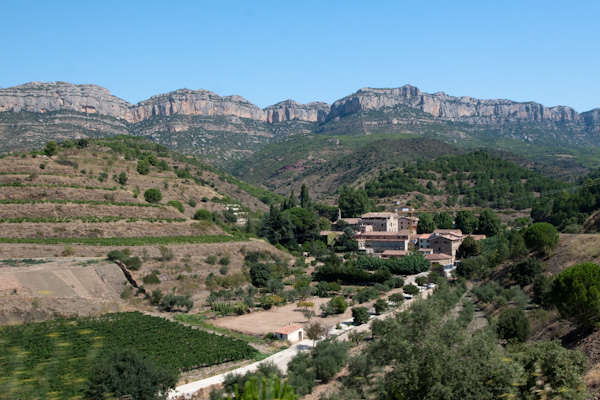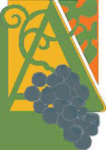Lummi Island Wine Tasting April 7, ’12
Easter Easter Easter
In keeping with our ongoing chronicle of our annual journey around our nearest and dearest star, we note the arrival of Easter this weekend. As you can read here, Easter falls on the first Sunday subsequent to the first full moon after the vernal equinox (March 21). Because Christians believe Jesus died and was reborn during the Jewish holiday of Passover, Easter was set to coincide with Passover, which is set according to the Jewish (lunar) calendar as the day of the first full moon after the vernal equinox. After about 800 years of discussion, the Church decided Easter should always be on a Sunday (Passover, like the vernal equinox, can begin on any day of the week), so it was decided that it should be, essentially, the first Sunday after Passover.
As it turns out, it’s even more complicated than that, because even the vernal equinox doesn’t happen on the same day each year, and is in fact a point in time (as is the exact Full Moon), not a whole day, and of course our round planet being what it is, it is never the same date everywhere. Not surprisingly, as politicians have always done in such circumstances, they created the “Ecclesiastical Calendar” by creating a virtual first Full Moon after a virtual Vernal Equinox.
Of course, that begs the question of why Passover was tied to the spring equinox in the first place. Well, imagine you have a lunar calendar, and you want to celebrate the coming of spring, which is in fact a solar event. Since this “spring moon” could fall near the end or the beginning (or anywhere else) of the lunar month, it could be substantially before or after the equinox. When you sit back and reflect on it for a bit, it is clear that the solar calendar makes a lot more sense for agrarian societies in temperate climates, where seasons are closely tied to cycles of planting and harvest, and much depended on getting it right. Closer to the Equator maybe it wasn’t so important. In any case, here again we continue to live with (and celebrate) the traditions of our ancestors and the cycles of the seasons.
The Art of Wine The Art of Wine The Art of Wine
This past Sunday concluded Ryan’s four-part wine tasting series on the Art of Wine, combining regional wines from four European countries with the art, food, literature, and music of the same region. Those who attended probably could not tell you in words how riesling is like Three Penny Opera (Pirate Jenny), liverwurst, spicy sausage, or Cabaret, but they do have some felt sense of the connections. I think all who attended any of the workshop series came away with the same fascinating felt sense that these wines and these cultural manifestations could only come from this one place.
Ryan will soon be starting another workshop series, repeating some of the themes from last summer’s series. I think the first workshop is scheduled for Sunday, April 15. (Hmmm, let’s see, April 15…..April 15….something I am supposed to do….hmmm). See Wine Workshop Flyer 3 for details!
Today’s wine Today’s wine Today’s wine
In keeping with our week-old tradition, tonight I am enjoying a glass (or two) of a lovely Priorat wine from the same winery as the one we will pour on Saturday. This one is the Parmi L’Infant (I don’t know if that is Spanish, French, or Catalan, but means “child”), a blend from younger vines than the more powerful L’Esperit we will be pouring this weekend. L’Infant is made from 80% garnacha (young vines) blended with 20% old vines carinena for which Priorato is famous. By comparison, the Parmi L’Esperit consists of 50% garnacha, 50% carinena, all from older vines. Even though L’Infant does not have the depth of L’Esperit, it still has considerable power, with lingering flavors of black currant with a soft minerality that permeates the palate. I know this is a little pricey for our regulars, but here is a chance to taste a great example of the Priorat wine style.
 Priorat
Priorat
This week’s wines:
This week’s tasting leads off with the same wine that led off last Sunday’s workshop, the REUSCHER-HAART Riesling Kabinett 2009, the most carefree of the rieslings we tasted. Kabinett usually has the lowest amount of residual sugar of the various rieslings, with matching acidity, and is therefore a marvelous wine with a wide range of dishes. Our second wine, XYZin zinfandel, (not to be confused with “white zinfandel,” which is barely even wine) is archetypally New World, a youngish California zin, which translates into “Big Fruit bordering on jammy.”
Our third wine, the Domaine Ste. Eugenie La Reserve is new to us, but turns out to be from within a few miles of where we spent a week in France last fall, the region of Corbieres, which is somewhat inland from the Mediterranean near the Spanish border. The country is reminiscent of Arizona, with broad vistas of rocky outcroppings (some topped with ruins of old Cathar castles), semi-arid conditions, and lots of space. Our last wine is a a preview for us of an area we will be visiting in Spain next month in the semi-mythic region of Priorat, about an hour south and inland from Barcelona. Arid, rocky, inhospitable, and powerful, Priorat is a landscape which forces vines to go deep, deep into the earth for water, producing wines of enormous depth and character.
 Domaine Ste. Eugenie, Corbieres
Domaine Ste. Eugenie, Corbieres
Reuscher-Haart Riesling Kabinett 2009 89pts $17
Finely focused, offering rich, plush flavors of ruby grapefruit and crisp Fuji apple. The stony finish lingers with hints of white pepper.
XYZin ’07 California $10
Opens with an attractive aroma of rose petals, juicy pomegranate, and warm brown sugar. Strawberry, and plum fruit dominate the entry and lead to a plush mid-palate redolent of dark cherries and mulberries complemented by earthy dimensions of sandalwood, fresh bay leaf, and chocolate.
Domaine Ste. Eugenie La Reserve ’10 France (Corbieres) $16
Carignan 40%, grenache 30%, Syrah 30%. Magnificent intense purple color, nearly black. Multi-layered bouquet of wild and domestic fruits enriched by hints of vanilla, flowers, anise, tobacco and mocha café. Great purity and intensity. Generous, rich, concentrated flavor. Remarkable length with lingering subtleties.
Parmi L’Esperit de Porrera ’05 Spain (Priorato) $30
50% Grenache, 50% Carignan; Opaque purple, nearly black at the core. A blast of black fruit and cured meat on the nose. Black and blue fruit on the palate; amazing depth, purity and complexity. Highly concentrated–the Carignan really adds the backbone here with licorice, minerals and great length.
If you enjoyed this post, please consider to leave a comment or subscribe to the feed and get future articles delivered to your feed reader.

 2072 Granger Way
2072 Granger Way